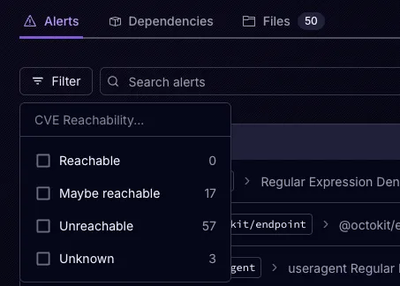
Product
Introducing Rust Support in Socket
Socket now supports Rust and Cargo, offering package search for all users and experimental SBOM generation for enterprise projects.
A Django library for creating and managing content blocks in markdown for developers and bloggers
Django Spellbook extends Django's templating and rendering capabilities with a focus on markdown-based content. It transforms markdown files into fully-rendered Django templates with auto-generated views and URLs, eliminating boilerplate code while maintaining Django's flexibility.
Django Spellbook integrates with your project by generating server-side code from markdown content.
Install the package with pip:
pip install django-spellbook
Then, add django_spellbook to your Django app's INSTALLED_APPS in settings.py:
# settings.py
INSTALLED_APPS = [
...,
'django_spellbook',
'my_app', # another app is required to use as the SPELLBOOK_MD_APP
]
Either batch render with python manage.py spellbook_md or run the engine manually with django_spellbook.parsers import render_spellbook_markdown_to_html helper fucntion.
python manage.py spellbook_mdDjango Spellbook's markdown processor offers a more flexible and Django-like approach to markdown parsing by extending traditional markdown syntax with Django template-like tags and blocks of reusable content components.
This parser goes beyond the standard markdown syntax by enabling you to include Django-inspired tags directly in your markdown files. This allows for more structured and semantic HTML, especially useful for projects that need finer control over styling and element attributes, like setting classes or IDs directly in markdown. This means you can write markdown that integrates more seamlessly with your Django templates.
With Django Spellbook, you can use special tags directly in your markdown:
{% div .my-class #my-id %}
This is a custom div block with a class and an ID.
{% enddiv %}
The above will render as HTML with the specified class and ID attributes:
<div class="my-class" id="my-id">
This is a custom div block with a class and an ID.
</div>
Note: You aren't just limited to class or ID attributes, you can set any attribute you want. {% div test="value" %} will render as <div test="value">.
Paired with powerful libraries like HTMX, this can create dynamic and interactive interfaces that are both visually appealing and highly functional without ever having to leave your markdown files.
Spellblocks are reusable content components that can be embedded directly in your markdown content. They provide a powerful way to create rich, interactive content while maintaining the simplicity of markdown syntax.
{~ alert type="warning" ~}
Warning: This is an important notice!
{~~}
Be sure to include the {% spellbook_styles %} tag in your base template if you want to use the built-in styles.

{~ card title="Getting Started" footer="Last updated: 2024" ~}
This is the main content of the card.
- Supports markdown
- Can include lists
- And other **markdown** elements
{~~}

Those are two examples of built-in Spellblocks. You can also create your own custom Spellblocks by extending the BasicSpellBlock class and registering them with the SpellBlockRegistry. See the documentation on Spellblocks for more information.
from django_spellbook.parsers import render_spellbook_markdown_to_html
def my_view(request):
markdown_text = """
# Hello World
{~ alert type="warning" ~}
Warning: This is an important notice!
{~~}
This is my content.
{~ card title="Getting Started" footer="Last updated: 2024" ~}
This is the **main content** of the *card*.
{~~}
"""
html = render_spellbook_markdown_to_html(markdown_text)
return HttpResponse(html)
python manage.py spellbook_md
This command will process markdown files in the specified directory from settings.py, rendering them as HTML and storing them in your app's templates directory. The rendered templates are accessible for further use in Django views, providing seamless markdown-based content management.
To configure the paths and templates used by Django Spellbook, add the following settings to your settings.py:
# settings.py
SPELLBOOK_MD_PATH = BASE_DIR / 'markdown_files'
SPELLBOOK_MD_APP = 'my_app'
SPELLBOOK_MD_PATH: Specifies the path where markdown files are stored.SPELLBOOK_MD_APP: Sets the app where processed markdown files will be saved.SPELLBOOK_MD_BASE_TEMPLATE: If specified, this base template will wrap all markdown-rendered templates, allowing for consistent styling across your markdown content.# settings.py
SPELLBOOK_MD_BASE_TEMPLATE = 'my_app/sb_base.html'
The base template must have a block named spellbook_md that will be used to wrap the rendered markdown content. Here is a basic example of a base template:
<!-- my_app/sb_base.html -->
{% extends 'base.html' %}
{% load spellbook_tags %}
<!-- extended base.html has a block named 'content' -->
{% block content %}
<div class="spellbook-md">
<!-- 'spellbook_md' is the required block name -->
{% block spellbook_md %} {% endblock %}
</div>
{% endblock %}
<!-- extended base.html has a block named 'extra_css' -->
{% block extra_css %}
{% spellbook_styles %}
{% endblock %}
Django Spellbook supports processing multiple source directories to different destination apps:
# settings.py
SPELLBOOK_MD_PATH = [
BASE_DIR / 'docs_content',
BASE_DIR / 'blog_content'
]
SPELLBOOK_MD_APP = [
'docs_app',
'blog_app'
]
With this configuration:
docs_content is processed to the docs_appblog_content is processed to the blog_appDjango Spellbook allows you to customize URL prefixes for your markdown content:
# Single source with custom URL prefix
SPELLBOOK_MD_URL_PREFIX = "docs" # Content at /docs/
# Multiple sources with custom URL prefixes
SPELLBOOK_MD_URL_PREFIX = [
"documentation", # First source at /documentation/
"blog" # Second source at /blog/
]
If not specified:
After running the markdown processing command, your content will be organized within your specified app's templates under templates/spellbook_md/. These files are created automatically in your app directory based on your SPELLBOOK_MD_APP setting.
To make your markdown-rendered pages accessible from the browser, add a path in your main urls.py:
# my_project/urls.py
from django.contrib import admin
from django.urls import path, include
urlpatterns = [
# other paths...
path('', include('django_spellbook.urls')), # Mount at root for cleanest URLs
# Or use a prefix if needed
# path('content/', include('django_spellbook.urls')),
]
The URL structure for your content depends on your settings:
For a single source with no URL prefix specified:
/page-name//folder/sub-page/With a custom URL prefix:
SPELLBOOK_MD_URL_PREFIX = "docs"
/docs/page-name//docs/folder/sub-page/When using multiple source-destination pairs with custom URL prefixes:
SPELLBOOK_MD_URL_PREFIX = ["docs", "blog"]
/docs/installation//blog/first-post/If no URL prefixes are specified, the default behavior gives the first app an empty prefix and uses app names for others:
/installation/ (First app at root)/blog_app/first-post/ (Second app with app name prefix)When you run the command, Django Spellbook processes all markdown files in the configured source directories. Here's a step-by-step breakdown of how URLs and views are generated:
Parsing Markdown Files:
ProcessedFile object for each markdown file, which includes details like the original file path, the processed HTML, the template path, and a relative URL.Creating Templates:
templates/spellbook_md/.SPELLBOOK_MD_BASE_TEMPLATE is set, the generated HTML will be wrapped in an extended base template.Generating Views:
views_docs_app.py).Example view function for a markdown file at articles/guide.md:
# For single source configuration (django_spellbook/views.py):
def view_articles_guide(request):
context = {} # Auto Generated Context for things like metadata and TOC
return render(request, 'my_app/spellbook_md/articles/guide.html')
# For multi-source configuration (django_spellbook/views_docs_app.py):
def articles_guide(request):
context = {} # App-specific context with TOC
return render(request, 'docs_app/spellbook_md/articles/guide.html')
Defining URL Patterns:
urls_docs_app.py).urls.py in django_spellbook includes all app-specific URL modules with their prefixes.SPELLBOOK_MD_URL_PREFIX, or use defaults if not specified.Accessing the Generated URLs and Views:
path('content/', include('django_spellbook.urls')) in your project's main urls.py, all your content becomes accessible.FAQs
A Django library for creating and managing content blocks in markdown for developers and bloggers
We found that django-spellbook demonstrated a healthy version release cadence and project activity because the last version was released less than a year ago. It has 1 open source maintainer collaborating on the project.
Did you know?

Socket for GitHub automatically highlights issues in each pull request and monitors the health of all your open source dependencies. Discover the contents of your packages and block harmful activity before you install or update your dependencies.

Product
Socket now supports Rust and Cargo, offering package search for all users and experimental SBOM generation for enterprise projects.

Product
Socket’s precomputed reachability slashes false positives by flagging up to 80% of vulnerabilities as irrelevant, with no setup and instant results.

Product
Socket is launching experimental protection for Chrome extensions, scanning for malware and risky permissions to prevent silent supply chain attacks.